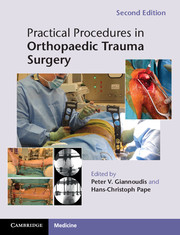Book contents
- Frontmatter
- Dedication
- Contents
- List of Contributors
- Preface
- Acknowledgements
- Part 1 Shoulder girdle
- Part 2 Upper extremity
- 3 Section I: Fractures of the proximal humerus
- 4 Section I: Fractures around the elbow
- Section II: Fractures of the proximal ulna
- Section III: Fractures of the ulnar shaft
- Section IV: Fractures of the distal ulna
- 5 Section I: Fractures of the proximal radius
- 6 Fractures of the wrist
- 7 Section I: Fractures of the first metacarpal
- Part 3 Pelvis and acetabulum
- Part 4 Lower extremity
- Part 5 Spine
- Part 6 Tendon injuries
- Part 7 Compartments
- Index
Section IV: Fractures of the distal ulna
Published online by Cambridge University Press: 05 February 2014
- Frontmatter
- Dedication
- Contents
- List of Contributors
- Preface
- Acknowledgements
- Part 1 Shoulder girdle
- Part 2 Upper extremity
- 3 Section I: Fractures of the proximal humerus
- 4 Section I: Fractures around the elbow
- Section II: Fractures of the proximal ulna
- Section III: Fractures of the ulnar shaft
- Section IV: Fractures of the distal ulna
- 5 Section I: Fractures of the proximal radius
- 6 Fractures of the wrist
- 7 Section I: Fractures of the first metacarpal
- Part 3 Pelvis and acetabulum
- Part 4 Lower extremity
- Part 5 Spine
- Part 6 Tendon injuries
- Part 7 Compartments
- Index
Summary
Indications
The distal ulna acts as the fulcrum for the distal radius during forearm rotation and is therefore vital for positioning the hand. Injuries in this region potentially destabilize the distal radioulnar joint (DRUJ) and are frequently seen in association with distal radial fractures. Indications for surgical intervention in such injuries include:
Open injuries.
Unstable fractures, particularly where the radius is also fractured.
Displaced articular injuries involving the DRUJ or the ulnocarpal joint.
Fractures with associated DRUJ instability.
The last of these are probably the most difficult to assess. DRUJ instability is a common cause of pain and limited range of motion following distal forearm injury. The triangular fibrocartilage complex (TFCC) is a primary stabilizer of the DRUJ, inserting within a fovea at the base of the ulnar styloid. Styloid tip fractures are seldom associated with instability and probably represent capsular avulsions rather than ligamentous injuries. In this situation other causes of instability should be sought, including malreduction of a radial fracture and ligamentous injury. Anatomic reduction of radial fractures frequently restores anatomic relationships at the DRUJ, re-tensioning the remaining ligaments and restoring stability even in the presence of ulnar styloid base fractures. Evidence suggests that fixation of ulnar styloid base fractures is only indicated where DRUJ instability persists following anatomic reduction and stabilization of radial injuries (Fig. 4.9.1).
- Type
- Chapter
- Information
- Practical Procedures in Orthopaedic Trauma Surgery , pp. 109 - 115Publisher: Cambridge University PressPrint publication year: 2014



